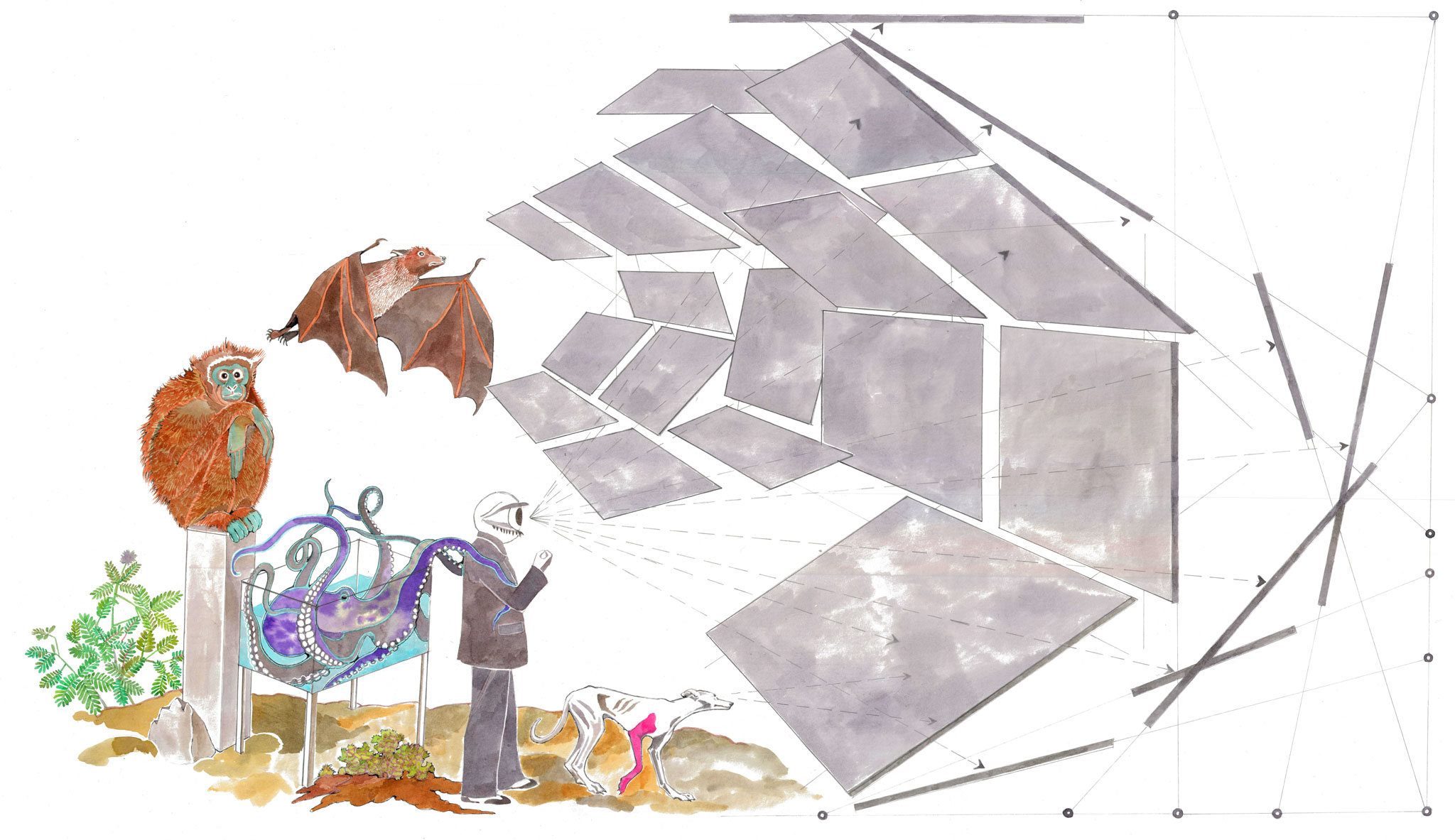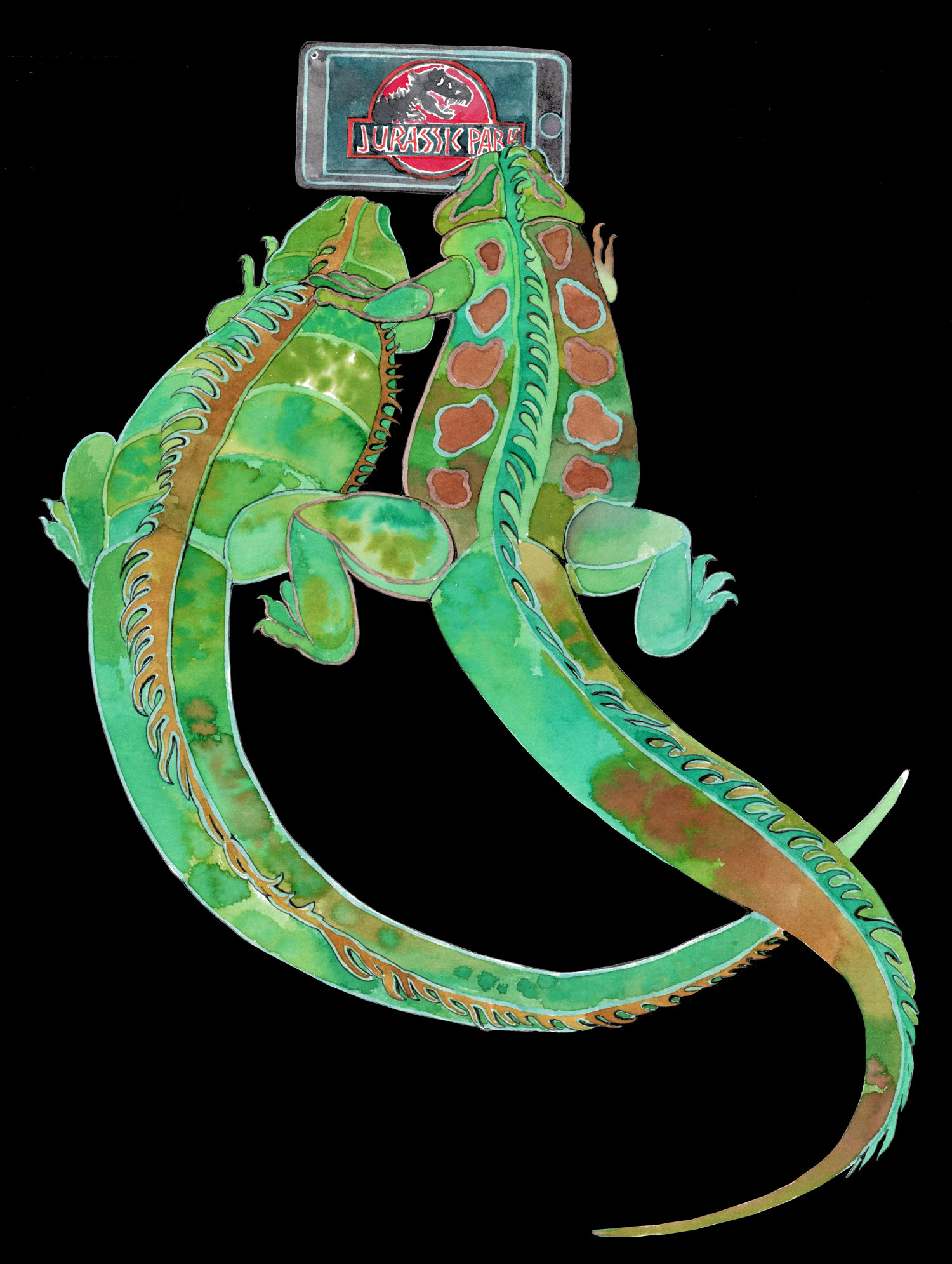25 February 2023 – 11 February 2024
Year Program 2023
NATURECULTURES
In 2023, RADIUS will present seven exhibitions, including three solo presentations and four group exhibitions, with a coinciding public and educational program. The year program takes shape on the basis of naturecultures, a term that refers to the increasing entanglement between nature and culture, enforced by climate change and ecological breakdown.

AT RADIUS IN 2023
We start the year with the group exhibition THE MEASURE OF THE WORLD, revolving around the ghosts of Western Enlightenment thinking and the relationship between science, truth-finding and the consequential creation of world views. With the work of fifteen artists, the exhibition stands as the starting point for the year program and presents a first counterpoint to the current crises that bear witness to the perverse reality of modernism. For primary school students, we present ONDIERPLEZIER: a workshop that pays tribute to weeds and pests and wonders: shouldn't we appreciate these “invasive species” instead of seeing them as a threat?
The following group exhibition THE GLASS CITY zooms in on the Westland—the largest contiguous agricultural greenhouse complex in the world, located between Hoek van Holland, Delft and The Hague—with the question: how can monocultural agriculture, often focussed on profit maximization, be reconsidered to more reciprocal, sustainable and fair systems of food as a common good? At the same time we present the solo exhibition A HEAVY HALO by OSCAR SANTILLAN, which centers around the continuity between colonial botany and the contemporary destruction of our planet. How can indigenous knowledge and emerging technologies such as artificial intelligence and virtual reality contribute to more reciprocal modes of existence?
As part of the Antoni van Leeuwenhoek Year—the Delft cloth merchant Antoni van Leeuwenhoek became renowned with his microscopes and is regarded as the founder of microbiology—we present the group exhibition RADICAL SYMBIOSIS: SOCIAL LIFE WITH MICROBES, curated by guest curators Àngels Miralda Tena and Mateo Chacón Pino. The exhibition takes the form of a petri dish, in which artists experiment with and present work on the basis of bacterial and microbial worlds, as an endless conversation between people and the living environment. In SISSEL MARIE TONN's solo exhibition THE PORTAL, the audience encounters three bog bodies, who collectively hum, murmur and converse with each other about their transcendental experience of becoming-with the bog. In the educational workshop MIJN MICROBEN EN IK, for secondary school students and adults, the microscope becomes the central medium, as a means to link awareness about micro life to the pandemic and the ways in which humans treat the Earth and its natural resources.
The year program concludes with the duo exhibition THE POLITICS OF THE ARMED LIFEBOAT by artists DIANA AL-HALABI & HILDA MOUCHARRAFIEH, which examines the differences between climate politics and the current political climate. In parallel we present JUNGHUN KIM's solo exhibition BREATHE A MENDING SONG INTO THESE EARTHLY WOUNDS, for which RADIUS will be transformed into a biotope in which geological meditation and entanglement beyond the exclusively human-oriented are central.
NATURECULTURES YEAR PROGRAM
(text continues below the image)

There is no border where evolution ends and history begins, where genes stop and environment takes up, where culture rules and nature submits, or vice versa. Instead, there are turtles upon turtles of naturecultures all the way down. Every being that matters is a congeries of its formative histories—all of them—even as any genome worth the salt to precipitate it is a convention of all the infectious events cobbled together into the provisional, permanently emerging things Westerners call individuals, but Melanesians, perhaps more presciently, call dividuals.—Donna Haraway, The Haraway Reader, 2004.
The term naturecultures originates from the feminist scientist Donna Haraway. She introduced the concept to describe the intertwined histories of a multitude of life forms on Earth, to reveal new ways of thinking about agency and power, difference and sociality, forms of existence and knowledge. Naturecultures is a term that arises from the scientific questioning of binaries—including, for example, human/animal, object/subject, and nature/culture—that are deeply rooted in the intellectual traditions of the sciences. The pronounced boundaries and divisions produced within and between scientific fields have led to the separation of humanity and nature, sometimes to the point of exempting humans from fundamental physical properties and laws of nature. The term naturecultures has no clear definition. Rather, it is a vibrant and unruly spectrum of transdisciplinary approaches united by a common argument: approaching and maintaining worlds that are more than human requires a change in the methods and tools with which we study those worlds. In other words, to remove the boundary between nature and culture, a radical mixing of disciplines including art, design, architecture and science is necessary. In this sense, naturecultures is a synthesis of nature and culture that recognizes their inseparability through ecological relationships that are formed biologically, physically and socially.
The thinking in binaries and divisions that emerged from Western Enlightenment thinking has failed, although its consequences are no less real and dualisms have (had) real consequences. The cultural field that deals with the Anthropocene—the current human-dominated epoch—oftentimes considers this as a new revelation, that while anthropologists and scientists have been challenging the contradiction between nature and culture for decades. This contradiction, they argue, is the basis for a dangerous belief in human exceptionalism, the root of both progress (for a few) and catastrophe (for the rest). Yet thinking in binaries in the cultural sector—between nature/culture, object/subject, human/non-human, organic/inorganic, natural/synthetic—is still the rule rather than the exception. But challenging contradictions alone is not enough! To understand the violent consequences of thinking in terms of exclusion mechanisms, we must divide history through new prisms, perspectives and points of view. We need to develop a counterpoint to the centripetal force of the dominant narrative of the Anthropocene—which centres on a particular type of human—by telling centrifugal narratives that recognise the vast inequalities generated by the various forces changing our planet.
Artists have always sought new ways to experience, represent and interact with ‘nature’. Although the addition of quotation marks in the previous sentence shows how dramatically the perspectives on nature have changed in recent decades, and how much this has changed the way we talk about ‘culture’. If we just think about the way in which ‘nature’ has re-entered ‘human’ history and ‘culture’ through climate change, we have to agree that there is a hybrid world. If the way we imagine the world changes, how should this be reflected in the way we create and interpret art?
In 2023, RADIUS looks at the deep dividing line we have drawn between ourselves and our living environment and asks: what makes this pattern so persistent? How can we use imagination to move from a human-centred vacuum to a world continuum of naturecultures? How can we learn to recognise the magnitude of the current climate regime without succumbing to despair? How can we transcend anthropocentrism in the Anthropocene and remove the human from the center of humanity? How can we reshape the canons that define how the world should be seen and what is considered important in it? How can we endorse what we mean when we say “we”? How do you move from dominant ways of seeing to ways of experiencing the world that makes use of the entire sensorium and rejects a one-sided perspective? How can a center for art, ecology and climate be more than a fashionable phenomenon and be embedded in everyday life? How can responsibility for the living environment—more than a rhetorical, symbolic commitment—be compatible with the impact of an art institution on that same environment?
As the recently deceased philosopher, anthropologist and sociologist Bruno Latour put it, “we have never been modern.” Yet we will have to keep finding new ways to learn to live in the ruins of modernism and capitalism that surround all of us; we need to “stay with the trouble,” as feminist philosopher of science Donna Haraway suggests. At RADIUS we take this assignment to heart and with the NATURECULTURES year program in 2023 we will look for the possibilities of a more earthly Earth.
PROGRAM
THE MEASURE OF THE WORLD
NATURECULTURES Chapter 1
25 February — 14 May 2022
THE GLASS CITY
NATURECULTURES Chapter 2
27 May — 20 August 2022
OSCAR SANTILLAN: A HEAVY HALO
27 May — 20 August 2022
RADICAL SYMBIOSIS: SOCIAL LIFE WITH MICROBES
NATURECULTURES Chapter 3
Guest curators: Àngels Miralda Tena and Mateo Chacón Pino
2 September — 19 November 2023
SISSEL MARIE TONN: THE PORTAL
2 September — 19 November 2023
DIANA AL-HALABI & HILDA MOUCHARRAFIEH: THE POLITICS OF THE ARMED LIFEBOAT
NATURECULTURES Chapter 4
2 December 2023 — 11 February 2024
JUNGHUN KIM: BREATHE A MENDING SONG INTO THESE EARTHLY WOUNDS
2 December 2023 — 11 February 2024
The NATURECULTURES year program is curated by Niekolaas Johannes Lekkerkerk, with assistance from Sergi Pera Rusca.
The NATURECULTURES year program has been made possible with the support of the Gieskes-Strijbis Fonds, Municipality of Delft, FONDS21, Mondriaan Fund, Prince Bernhard Cultuurfonds, Overvoorde Gordon-Stichting / Pauwhof Fund, Stroom Den Haag, Iona Stichting, Institut français des Pays-Bas, The Swiss Arts Council Pro Helvetia, EKOPLAZA, documenta Institut, CE Delft.